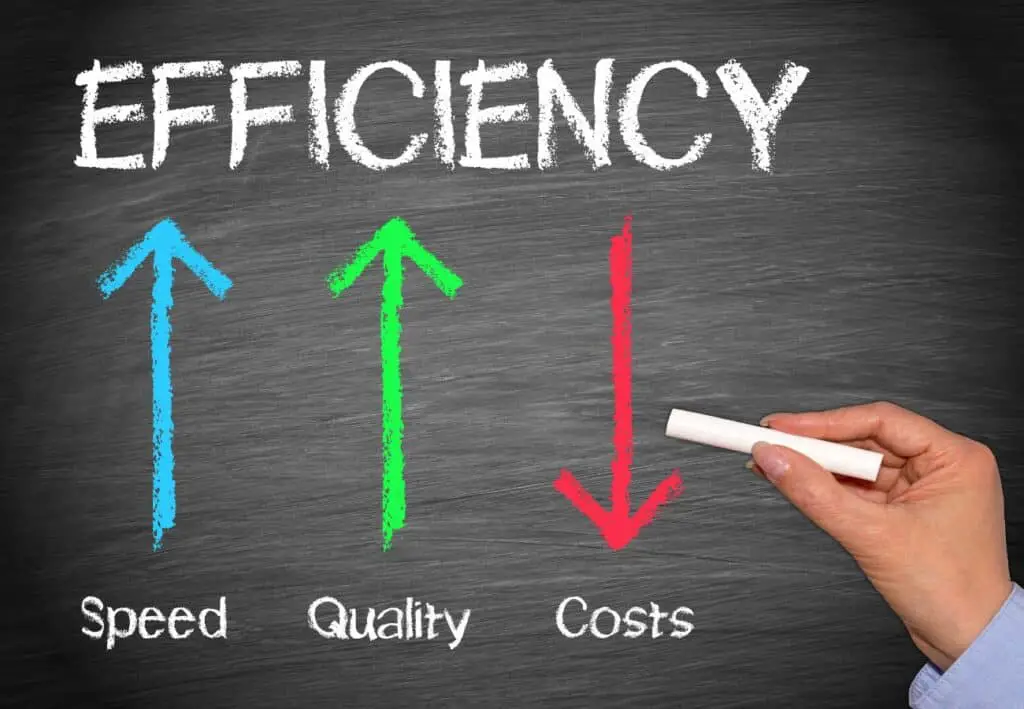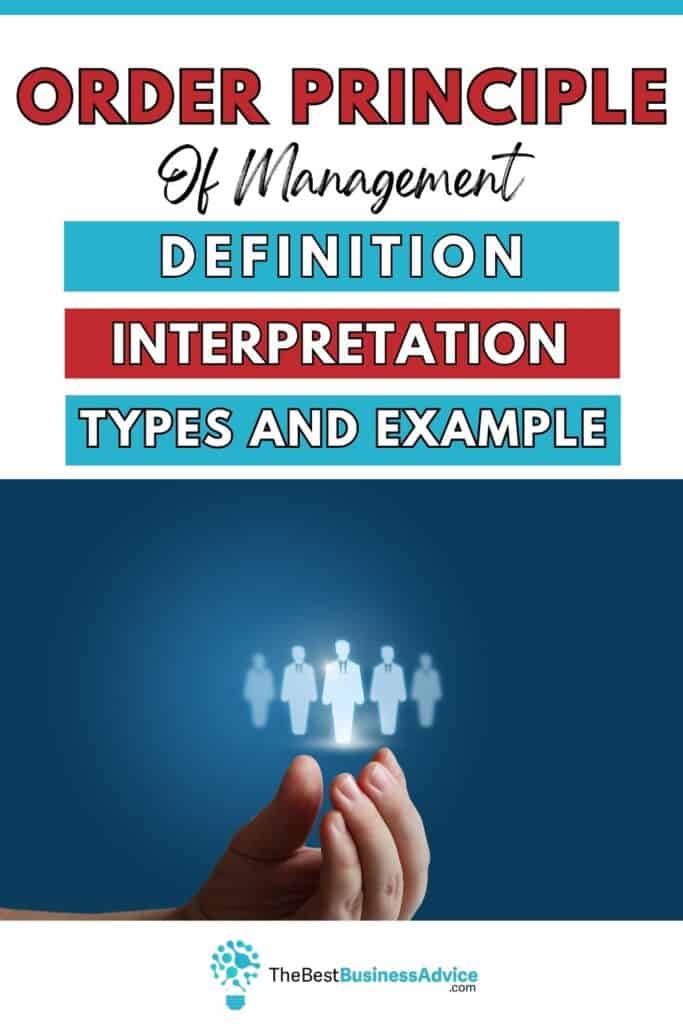Order Principle Of Management: Definition, Interpretation, Types And Example

Henri Fayol created his 14 Principles of Management at the beginning of the 20th century. These Principles of Management remain just as important and effective in business today. The Order Principle of Management although only appearing 10th in the list is vital to the smooth running of any business.
The Order Principle of Management focuses on maintaining each person and thing in their proper space and place to promote and ensure efficiency. The Order Principle uses proper organization of resources be they human, properties, or equipment to increase productivity.
Where there is no order, chaos will likely follow, leading to a decrease in productivity. We will take a look at how the Order Principle of Management helps to create order, as well as understanding what it means, and why it should be used. Lastly, we will provide you with some examples of how it increases efficiency and productivity in the work place.
Table of Contents
What Is Order Principle Of Management?
The Order Principle of Management is based on the premise of maintaining order to more effectively lead to a smooth running and efficient work force. Fayol himself notes this principle to be as follows “People and materials must be in suitable places at the appropriate time for maximum efficiency”.
Simply put, the principle is not about control but about organization and ensuring that proper organization leads to maximum productivity. If each person and thing has its own specific place then each person and thing will be able to more effectively complete their tasks.

How Does This Principle Work?
The Order Principle of Management works by ensuring that both staff and equipment are in the correct place and role for better functioning of the workplace. This helps to regulate and streamline the work flow and process as exterior factors can’t create distractions.
By ensuring that staff with particular skills and jobs have their own area in which to work as well as ensuring that their required tools and equipment are also allocated their own place; one is able to minimize loss and damage to equipment as well as ensure that staff have access to what they need to complete their tasks.

Two Categories Of Order Principle
As the Order Principle of Management deals with the organization of both people and things; it can be broken up into two parts or orders: material order and social order. Each category deals with the different types of resources available.
Material Order
The material order is just that: the order of the material resources, being equipment and premises. The material order runs on the principle that physical resources have a specific space and place. What is more, this space is determined by the function of the material or premises.
How and why the physical resources function will determine where they are kept to ensure maximum productivity.
Material order governs much of the everyday running of a business. Is the business situated in the best area for business? Is the layout conducive to optimal spend? Is the equipment organized in the right place for optimal production? Is the area set up in such a way that a manager can most easily oversee operations?
These are all questions that the material order subsection of the Order Principle of Management will investigate to ensure that everything in the physical realm of business is set up to provide the most efficient work processes.

Social Order
The social order subsection deals with the human element of the Order Principle of Management. This is an integral part of any organization focusing on job role and the person and skill set that must fill that role.
More than this the social order will have a great deal to do with the overall hierarchy in a business creating efficient management systems where responsibility is delegated dependent on the level employees function in.
The three levels of management are a commonly applied structure in any business model, and these are governed by the social order within the Order Principle of Management.
Top management will have the most responsibility as well as accountability which decrease as one moves down the management levels to middle and lower management. In turn the latter two management levels work to keep the staff performing.
The social order provides the chain of command to ensure that the business is run efficiently. It also provides the space for human resources to provide the correct person with the correct skill for the job at hand as well as replace staff with candidates of equal expertise to ensure the continued smooth running of the enterprise.
If the social order can be kept constant and free of disruption then a business can continue to function effectively regardless exterior changes and fluctuations.

Why Order Principle of Management Is Important?
Without the Order Principle of Management companies will not be able to operate in the most efficient way possible. Efficiency refers to the optimal use of resources both material and human to provide optimal production.
Each employee is hired for a specific role that requires a specific skill set. You must ensure that each role is filled by individuals who match the needs of that role. The same goes for equipment and tools used by employees. The correct equipment and tools need to be available and within easy reach for a job to be done.
By maintaining the Order Principle of Management there will be a reduced waste of resources. In fact, there could even be no wastage at all if the human and material resources are ordered effectively enough. This saves not only money but also time.
If there is no proper order, precious time will be wasted in walking from one building to another to complete a task. Additionally, if an employee is assigned a task they are not skilled in, they may not be able to complete the task in optimal time. They might even fail at the task, which will again cost the company valuable time and money.
The Order Principle of Management aims to use each employee in their specific sphere of expertise to streamline production. This increases efficiency and production and allows employees to feel satisfaction by working in their area of expertise.
The Order Principle of Management will greatly improve the achievement of goals allowing for quality production while reducing wastage of both time and money.

Example Of Order Principle Of Management
To better understand the Order Principle of Management one can take a car dealership as an example.
Dealerships will have specifically designated areas and buildings that fulfill specific roles: the show room floor, the workshop, the parts center. Within each area are skilled personnel who work within their designated area. Mechanics will function within the workshop, the sales staff within the showroom area, and the technicians in the parts center.
Mechanics are skilled to fix vehicles and will have the requisite tools and equipment in the workshop with which to efficiently do their jobs. The sales staff will have adequate knowledge of the vehicles and sales expertise and in conjunction with a clean crisp showroom will be able to more efficiently sell the vehicles.
The parts technicians will have a well-organized store room that is close to the workshop with requisite parts so that it will be easy to get parts to the workshop with minimal delay.
All the parts and staff together work towards optimal production and smooth running of the dealership.

Wrap-Up
The Order Principle of Management much like the other 13 management principles of Henri Fayal has the end aim of increasing overall productivity which is the prime function of any business. By streamlining resources be they human or material one is able to most efficiently manage a business to its optimal function.
PIN THIS FOR LATER…
DID YOU FIND THIS INFORMATION HELPFUL? Share the love on social.
Follow us on Pinterest & Instagram!
ANY OTHER BUSINESS ADVICE WE CAN WRITE ABOUT?
Let us know, email us at: Advice@TheBestBusinessAdvice.com

![]()








